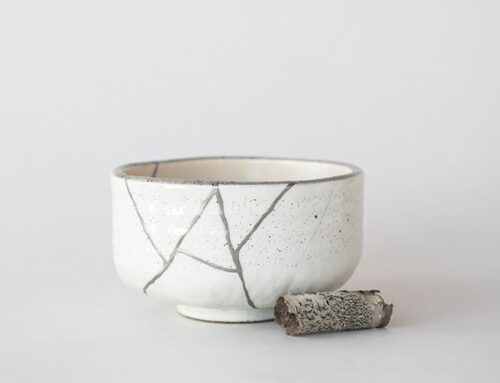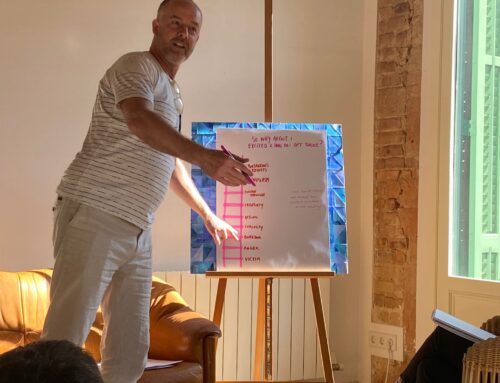
The belief is that sculpture is one of the oldest forms of art, as it existed before the discovery of painting. Being in three dimensions, sculpture is necessarily more durable. Made of terracotta, ceramics, stones or white marble, metal, it will last longer than paintings on canvas or paper. So, although it may be false to say it’s the oldest art we have, sculptures are the ones that have best survived.
Sculptural works of art are very diverse, ranging from outdoor sculptures to kinetic sculptures, sculpture gardens, architectural sculptures, public art, and figurative art.
Just as an example of time and magnificence: one of the most fascinating discoveries in the world of ancient art, the Terracotta Army, was created for China’s first emperor, Qin Shihuang (259 – 210 BC), with the intention of protecting him in the afterlife. The group of around 7,000 life-size terracotta warriors and horse figures that line the long corridors of the emperor’s vast tomb complex gives us an idea of the wealth and influence of the Chinese empire.
How has sculpture evolved throughout history? Let’s take a quick look at the history of sculpture from prehistoric times to the contemporary art world, exploring its most significant transformations.
Paleolithic
The Löwenmensch (‘lion-human’ in German) is a Paleolithic ivory figurine dating back to around 35,000 BC and is one of the oldest sculptures ever discovered.
Found in a cave in Hohlenstein-Stadel, Germany, in 1939, it was carved from mammoth ivory. Since the tribes of the time lived on the brink of survival, dedicating so much time to making this figurine suggests it must have been an extremely important artifact. It may have been intended for use in a shamanic ritual, to obtain protection for the tribe or ensure a “good hunt.”
Egypt
Here, we see a movement away from purely spiritual or ritual themes toward something much more secular.
The Egyptians strongly believed in the afterlife, so when their pharaoh died, they buried him with goods that could satisfy his needs in the afterlife. They also preserved bodies and placed them in pyramids. They had many statues that served as representations of their gods, nobles, and rulers, and these were available in burial sites and temples. They believed that spirits could return to these statues. The Great Sphinx of Egypt is probably one of the most famous sculptures in the world. Unlike the Löwenmensch figurine, the Sphinx features a human head on the body of a lion.
Early Christian Sculptures
Until 325 AD, the Roman Empire was largely polytheistic. Sculptural works were generally intended to honor a variety of gods or different members of the nobility. Then, in 325 AD, with the rise of Christianity in the later years of the Roman Empire, sculptural traditions in Europe began to decline. This was partly due to the religious notion that, in the Ten Commandments, the carving of images was prohibited. General social instability throughout Europe contributed to the fact that very few medieval sculptures have survived.
The Italian Renaissance
At the beginning of the 15th century, the Renaissance marked the beginning of an eclectic study of the humanities, including science, astronomy, and mathematics. Artists began revisiting the reflective and dignified perfection of classical times. Figures like Donatello and Michelangelo, who made versions of David, had deep knowledge of human anatomy and could create incredibly realistic statues. A true “Renaissance Man,” one of Michelangelo’s first sculptures was “The Virgin and Child”, completed when he was only 16 years old.
Rodin and the beginnings of modernist sculpture
Throughout the late 19th and early 20th centuries, modernism and modern art emerged from the desire to create new artistic and cultural forms. All sculptors and writers, painters, architects, and musicians were seduced by the desire to “do something new!” The artist who best achieved this in sculpture was Auguste Rodin. His work was more realistic than earlier sculptural trends, which focused more on religious or mythical figures. Pablo Picasso also produced some sculptural works. In fact, his mixed-media sculptures were especially influential in the early 20th century. These early sculptural creations employed a variety of unlikely objects, such as cardboard, bicycle seats, plywood, tree branches, etc.
During the early 20th-century modernist movement, a variety of artistic movements emerged: Cubism, Dadaism, Surrealism, Pop Art, Minimalism, and Futurism all arose during this period. Marcel Duchamp was an artist of the time who questioned the notion of what art really is. Duchamp was part of the Dada movement, a reaction to World War I that was essentially an “antidote.” Duchamp’s 1917 exhibition, titled “Fountain“, perfectly illustrates the pessimism, frustration, and absurdity of the movement.
Contemporary Sculpture
Contemporary sculpture emerged in the mid-1960s and 1970s to distinguish it from modern sculpture. It does not represent any specific artistic style; rather, it promotes an opening of the specific art field to the point of blurring boundaries between disciplines through experimentation.
During this period, sculpture stopped imitating reality and began to value emptiness, playing with light or negative volume. It also began to incorporate movement through mechanical actions or atmospheric agents. Additionally, the use of new materials such as concrete, steel, iron, and plastics became significant.
As a national example, we choose Jordi Diez, one of Spain’s most internationally known sculptors today. A classical sculptor, he gained fame after completing his work for Roland Garros on Rafa Nadal. His works can be found in museums, temples, private collections worldwide, and public spaces.
This was a quick overview of the most important sculptural styles in history. And since we don’t like to talk about something without giving you the opportunity to try it… we’ve organized 3 sculpture workshops for you to choose from. No previous experience required. Find them here!
Hugs! Paula




